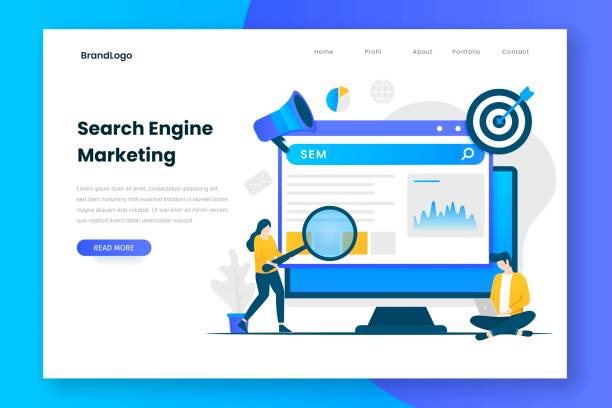Understanding the Importance and Necessity of E-commerce Website Design in the Digital Age

In today’s world, where information technology is rapidly advancing and #internet has become an inseparable part of daily life, e-commerce website design is no longer an option, but an undeniable necessity for any business seeking growth, development, and continuous presence in competitive markets.
A successful e-commerce website is a gateway to wider markets and unlimited access to millions of potential customers worldwide.
This powerful tool enables businesses to display and sell their products and services 24/7, without the spatial and temporal limitations of physical stores.
This approach not only significantly reduces operational costs related to rent, employee salaries, and traditional store maintenance, but also, by collecting valuable data on user behavior, allows businesses to optimize their marketing strategies and provide a personalized shopping experience.
E-commerce, which is based on the design and development of e-commerce websites, allows for more direct communication with customers and more effectively addressing their needs.
Therefore, the first and most important step for successful entry into the online world and competition with the giants in this field is special attention to the principles and details of commercial website design.
This section, in an explanatory and educational manner, helps you become familiar with various aspects of building an online store and gain a deeper understanding of its boundless potential.
An e-commerce site is not just an online catalog, but an interactive platform for creating value and lasting customer relationships.
Are visitors to your e-commerce site leaving before purchasing? Don’t worry anymore! With RasaWeb’s professional e-commerce website design services, solve the problem of not converting visitors into customers forever!
✅ Significantly increase conversion rates and sales
✅ Unparalleled and engaging user experience
⚡ Contact us now for a free consultation!
Choosing the Right Platform for Your E-commerce Website Design

One of the most important and crucial decisions in the path of e-commerce website design is choosing the right platform.
This choice directly impacts the website’s capabilities, maintenance costs, ease of management, and its scalability in the future.
Various platforms are available in the market, each with its own advantages and disadvantages, suitable for different types of businesses.
Among the most popular options are WooCommerce, a powerful and flexible plugin for WordPress; Shopify, a complete and hosted solution with easy usability; and Magento for large and complex businesses with specialized needs.
WooCommerce, due to its open-source nature and extensive features offered through thousands of free and paid plugins, is an excellent choice for small and medium-sized businesses looking for full control over their website and wishing to customize it according to their specific needs.
This platform requires more technical knowledge but provides unparalleled flexibility.
In contrast, Shopify, by offering a user-friendly environment, strong support, and quick setup, is suitable for those who want to quickly launch their store and focus on sales without getting involved in technical issues.
This platform is mostly suitable for those looking for a ready-made and hassle-free solution.
However, if you are looking for a fully customized solution with very high scalability and specialized capabilities for complex inventory management, large orders, and integration with your internal systems, you might need to develop a custom platform or use Magento.
This section, in a guidance manner, helps you choose the best platform for creating your commercial website by carefully reviewing your needs, budget, technical skills, and long-term plans.
Each platform offers different capabilities in inventory management, payment options, marketing tools, and reporting, which should be carefully examined before starting the e-commerce website design process.
Choosing the right platform will be the foundation for the long-term success of your online store.
Principles of UI/UX Design and its Role in the Success of an Online Store

UI/UX design (User Interface and User Experience) is one of the fundamental pillars and perhaps the most important factor in the success of any e-commerce website design.
An attractive and visual user interface (UI) and a smooth and enjoyable user experience (UX) not only attract customers to your site but also encourage them to stay, explore products, and ultimately make a purchase.
UI design includes all visual aspects of the site: from color palette and fonts to element layout, button sizes, and image quality.
The goal of UI is to create a visually pleasing and professional environment that reflects your brand and gives the user a good feeling.
In contrast, UX refers to the ease of use of the site, page loading speed, easy and logical navigation, and all user interactions with the site that lead to a sense of satisfaction, efficiency, and lack of confusion.
An online store should be designed in such a way that users can easily find their desired products, obtain sufficient and clear information about them, and complete the purchasing process without any problems or obstacles.
The importance of responsive design is also very high in this section; your site must be displayed correctly on all devices, from desktop computers to tablets and smartphones, and provide a consistent user experience.
This section, in an analytical and educational manner, examines the importance of these principles and provides solutions for improving them.
The tables below help you better understand the key UI/UX elements and apply them in your e-commerce website design.
Ignoring these principles can lead to high cart abandonment rates and loss of customers, even if your products are excellent.
| UI Element | Description | Importance in E-commerce Website Design |
|---|---|---|
| Color Scheme & Font | Attractive color palette, consistent with brand, and readable fonts | Creating a strong visual identity, increasing text readability, and emotional impact |
| Images & Videos | High quality, complete product display from different angles, and introductory videos | Visual customer attraction, providing more accurate product information, and increasing trust |
| Call-to-Action (CTA) Buttons | Clear, visible, with persuasive text (e.g., “Add to Cart”) | Guiding the user towards desired actions (purchase, registration) and improving conversion rate |
| Layout & Page Structure | Orderly, logical, and user-friendly arrangement of elements on the page (F-Pattern or Z-Pattern theory) | Ease of navigation, quick access to information, and reducing user confusion |
Product Management and Rich Content in Online Store
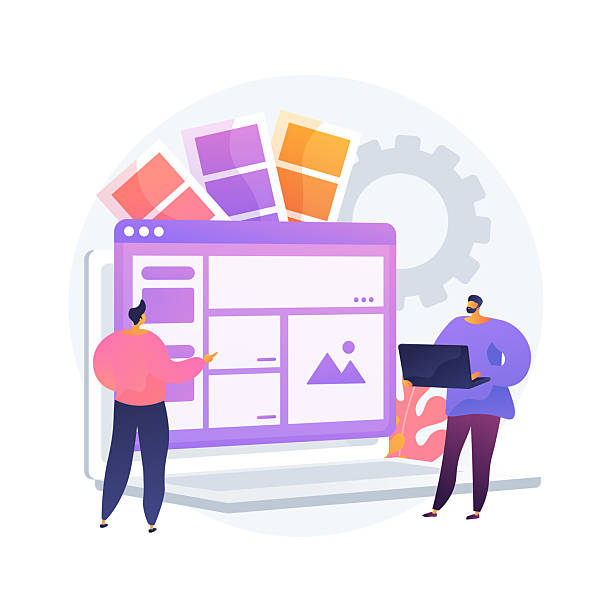
After e-commerce website design and preparing its infrastructure, the next crucial step is effective product management and providing rich and attractive content for them.
Simply placing a product photo and price is not enough; to attract customers, encourage them to buy, and increase conversion rates, you need to provide complete, accurate, and engaging information about each product.
This includes various items: detailed and comprehensive product descriptions that explain not only features but also benefits and how to solve customer problems, complete technical specifications, high-quality and professional images from different angles, introductory videos and product usage instructions, and also a section for customer reviews and ratings.
Optimizing images in terms of size and quality for site loading speed, and also intelligent use of appropriate and relevant keywords in product titles and descriptions, plays an important role in your e-commerce site’s SEO and helps products be more visible in search engines.
Product content should not only be explanatory and informative but also entertaining, persuasive, and even emotional.
For example, how can your product improve the customer’s lifestyle or what emotional value does it add to them? Storytelling around products can also build a deeper connection with the customer.
Adding frequently asked questions (FAQ) for each product, providing certifications or quality standards, and even comparing the product with competitors (if needed) are other ways to provide rich content.
This approach helps you have an e-commerce website design with strong and rich content that is both optimized for search engines and attractive and convincing for users.
Remember that quality content moves the customer from curiosity to the decision-making stage for purchase.
Is your e-commerce site ready to attract maximum customers and increase sales? RasaWeb transforms your online business with modern and efficient e-commerce website designs.
✅ Increased speed and improved SEO
✅ Excellent user experience on mobile and desktop⚡ Get a free e-commerce website design consultation from RasaWeb now!
Payment Security and Banking Gateways in Online Store
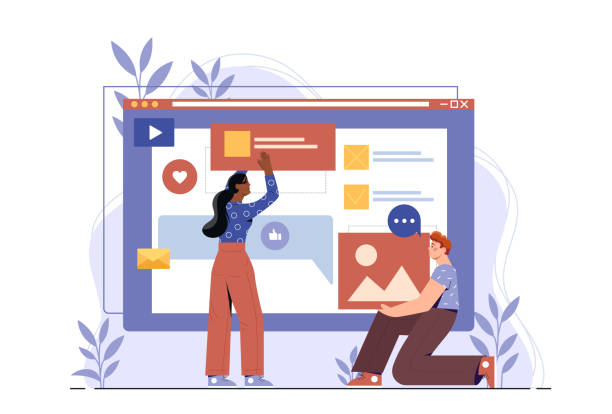
Security in e-commerce website design, especially in payment processes and customer information protection, is of vital importance.
Customers will only make online purchases if they are completely confident about the security of their financial and personal information.
Choosing reliable payment gateways with SSL (Secure Sockets Layer) certificates is the first and most important step to build trust.
SSL certificates encrypt data between the user’s browser and the website server, preventing the theft of sensitive information such as bank card numbers, passwords, and personal details.
In Iran, reputable banking payment gateways and intermediary payment services such as ZarinPal, IDPay, or NextPay provide reliable solutions for online transactions, which, by observing advanced security protocols, encrypt sensitive bank card information of customers and keep it away from unauthorized access.
In addition, a successful e-commerce website design should make the payment process as simple, fast, and unambiguous as possible.
Any extra steps, complex forms, or requests for unnecessary information can confuse the customer and lead to cart abandonment.
Providing diverse payment options, including online payment through all Shetab cards, card-to-card transfer (for some businesses), and even cash on delivery (COD) for certain goods or specific geographical areas, can improve the shopping experience and provide access to customers with different preferences.
Security measures such as using CAPTCHA in forms, fraud detection systems, and regular updates to payment systems are also essential to protect your e-commerce site.
This section is a comprehensive and specialized guidance about how to implement secure and efficient payment systems in your e-commerce site, which not only helps protect your business and customers but also increases trust and, consequently, sales.
Ensuring security and simplicity is the cornerstone of a flawless online shopping experience.
Search Engine Optimization (SEO) in E-commerce Website Design

Having an excellent e-commerce website design and unique products is practically useless without being seen by potential customers.
This is where Search Engine Optimization (SEO) comes into play and plays a pivotal role in the success of your online business.
SEO is a set of techniques and strategies that help your website rank higher in Google and other search engine results and attract more organic (non-paid) traffic.
For an online store, SEO goes beyond keyword optimization; it includes technical, content, and backlink optimization.
In the On-Page SEO section, you should naturally and intelligently use keywords related to your products and services in page titles, product descriptions, meta tags (meta title and description), and page URLs.
Creating high-quality and comprehensive content for each product, such as long descriptions, reviews, and Q&A sections, shows Google that your page is authoritative and useful.
From a technical SEO perspective, site loading speed, full mobile compatibility (Mobile-Friendliness), having an organized and understandable XML Sitemap for search engines, and the correct structure of Schema Markup for displaying more product information in search results are all very important factors in improving site ranking.
Thought-provoking content related to your products can also help with SEO; for example, creating blog posts about “How does product X solve your problem?” or “Comparing the best models of Y in the market.”
Also, for Off-Page SEO, building strong internal links between relevant pages on your site and acquiring backlinks from other reputable and relevant sites are important SEO strategies that increase your domain authority in Google’s eyes.
Continuous and proper investment in SEO brings long-term and sustainable returns for your electronic business website development and helps you attract more organic and targeted traffic.
This is a specialized and analytical section for improving the visibility of your e-commerce site, which requires patience and great care.
Marketing and Customer Acquisition Strategies for Online Store

After e-commerce website design and its complete preparation for offering products, the next step is to formulate and implement effective marketing strategies to attract customers and increase sales.
Online marketing includes a wide range of activities whose main goal is to increase brand awareness, attract targeted traffic to the site, and convert visitors into loyal customers.
Among the most important of these strategies are content marketing through blogs, articles, videos, and podcasts, which provide valuable content relevant to your products and increase your brand’s credibility.
Marketing on social networks such as Instagram, Telegram, and LinkedIn are also very powerful channels that can drive a lot of traffic to your e-commerce website design.
Activity on these platforms should be entertaining, interactive, and engaging to encourage users to share your content and interact with your brand.
Email marketing is also an excellent tool for maintaining communication with current and potential customers; sending newsletters, announcing discounts and new products, and personalized messages can significantly increase sales.
In addition, paid advertising (PPC) on Google (like Google Ads) and social networks provides quick and targeted access to potential audiences and is very effective for short-term campaigns and rapid sales increases.
Collaborating with influencers in your field can also quickly increase credibility and access to new audiences.
Each marketing channel requires a specialized approach and careful planning to yield the best results.
Your e-commerce website design should be able to integrate with various marketing tools so that you can easily manage and analyze your campaigns.
Below, the table shows some key marketing channels and their importance for an online store, which can help you in comprehensive planning.
This information is news and practical, vital for any online business.
| Marketing Channel | Description | Importance for E-commerce Website Design |
|---|---|---|
| Content Marketing | Producing and publishing useful and engaging content (blog, video, infographic) related to products | Attracting organic traffic, increasing brand credibility and trust, improving SEO, and nurturing leads |
| Social Media Marketing | Continuous and interactive activity on platforms like Instagram, Telegram, Twitter | Increasing brand awareness, direct interaction with customers, direct traffic to the site, customer loyalty |
| Email Marketing | Sending newsletters, special offers, abandoned cart reminders to subscribers | Increasing repeat sales, customer loyalty, high Return on Investment (ROI), and personalization |
| Paid Advertising (PPC) | Click-through advertising in search engines (Google Ads) and social platforms | Immediate and targeted access to ready-to-buy customers, rapid increase in sales and conversion rate |
Data Analysis and Continuous Optimization of Online Store
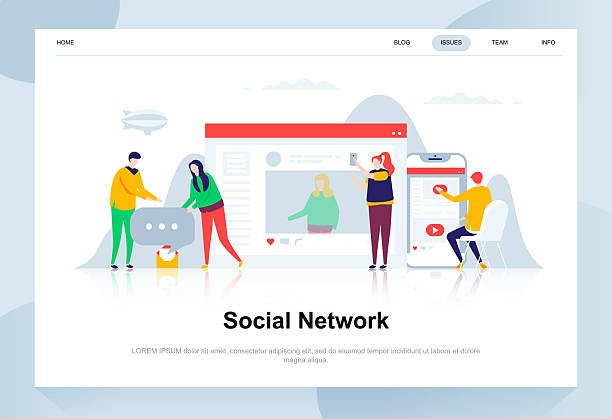
E-commerce website design is just the beginning of entering the world of online business; to ensure long-term success and sustainable growth, continuous data analysis and optimization are required.
Web analytics tools like Google Analytics allow you to monitor user behavior on your site in the most accurate way possible.
You can see where users came from, which pages they visited, how long they spent on the site, their navigation path, and at what stages of the purchase process they left the site (bounce rate and cart abandonment rate).
This valuable information provides you with deep analytical insights that are the basis for smart decision-making.
Based on this data, you can make informed decisions to improve user experience (UX), increase conversion rates (Conversion Rate Optimization – CRO), and optimize your marketing campaigns.
For example, if you notice that many users leave the site at the payment stage, you can simplify the payment process.
Performing A/B testing to compare two different versions of a page, button, or title can show you which changes lead to better results (such as increased click-through rate or conversion rate).
This is an iterative and continuous process that is essential for any e-business website.
The ultimate goal is to create thought-provoking content in your own mind: “How can I improve the user experience and increase sales?” or “Which part of my site needs immediate improvement?” The answers to these questions lie in the data and help you bring your e-commerce website design to its peak and always be on the path of progress and improvement.
Ignoring data analysis means moving in the dark and missing countless opportunities for growth.
Is your company’s website as professional and trustworthy as it should be? With specialized corporate website design by RasaWeb, create an online presence that reflects your credibility and attracts more customers.
✅ Building a powerful and professional image for your brand
✅ Converting visitors into real customers
⚡ Get a free consultation now!
Importance of Customer Support and Building Loyalty
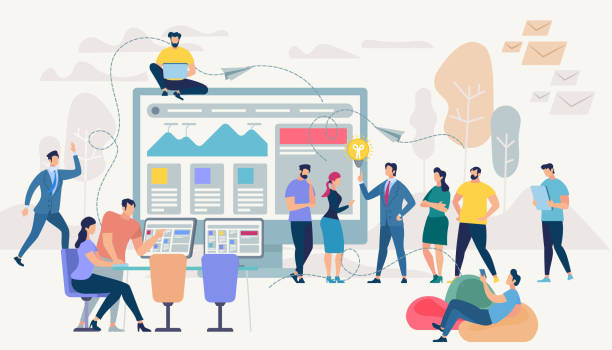
One of the most important factors in the long-term success of any e-commerce website design is providing excellent and beyond-expectation customer support.
In the online world, where customers do not have physical access to the seller, trust and satisfaction are created through strong after-sales service and support.
Online customers expect to find answers to their questions quickly and easily and receive necessary guidance if a problem arises.
Various communication channels such as Live Chat, dedicated support phone number, responsive email, and a comprehensive FAQ section should be clearly available on the site.
Prompt, effective, and empathetic responses not only solve customer problems but also strengthen their sense of trust, value, and satisfaction, leading to customer loyalty.
An educational section on the site that explains product usage in detail, provides tutorial videos, or resolves common issues can reduce the workload of the support team and enable customers to help themselves.
Also, providing transparent and fair after-sales services, such as product returns or warranty, can make the shopping experience more pleasant for customers and reduce their risk for online purchases.
In today’s competitive world, customer loyalty through a positive user experience and unparalleled support is a key factor in differentiating your e-commerce website design from competitors.
Customers who have had an excellent support experience not only become loyal customers themselves but are also your best brand ambassadors and can attract more organic traffic and new customers to your online store through positive word-of-mouth advertising and excellent reviews.
This explanatory and guidance approach emphasizes the importance of creating a positive customer experience, even after purchase.
Future Trends and E-commerce Website Maintenance
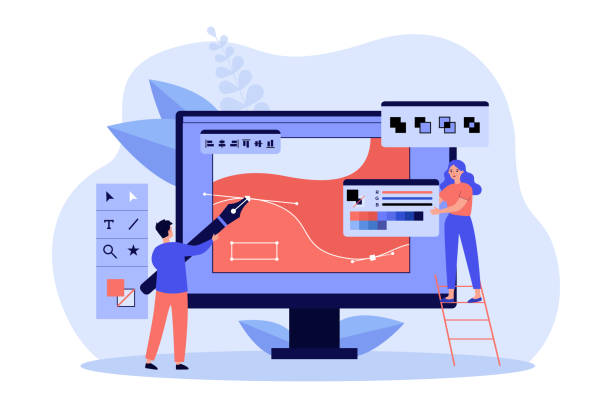
The world of e-commerce website design is constantly changing, evolving, and embracing new technologies.
To maintain competitiveness and ensure long-term sustainable success, you must keep pace with future trends and give special importance to regular maintenance and continuous updates of your site.
Trends such as mobile commerce (m-commerce) which doubles the importance of user experience on smartphones, artificial intelligence (AI) for personalizing the shopping experience, suggesting relevant products, and smart chatbots, augmented reality (AR) for displaying products in 3D in the customer’s real space, and even blockchain technology for increasing security and transparency of transactions, shape the future of e-commerce website design.
The good news is that with technological advancements, these features gradually become available to all businesses and turn into essential tools for competition.
But in addition to following and integrating these trends, regular site maintenance and updates are also of high importance.
Security updates to protect against cyber threats, regular and frequent backups of all site information and databases to prevent data loss, and continuous optimization of site speed to improve user experience and SEO are all part of essential maintenance that ensures the smooth and secure operation of your e-commerce website design.
Neglecting maintenance can lead to serious security problems, reduced site speed, technical errors, and ultimately loss of customer trust and site ranking in search engines.
This thought-provoking content creates the question in mind: “Is my site ready for the future?” By investing in updates and maintenance, you can ensure that your commercial website is always at its peak performance and ready to embrace future challenges and opportunities.
Frequently Asked Questions
| Question | Answer |
|---|---|
| What is e-commerce website design? | The process of creating a website that allows displaying products or services, adding them to the cart, and performing online transactions. |
| Why do we need an e-commerce website? | 24/7 access to customers, expanding geographical sales range, reducing operational costs compared to a physical store, and the ability to analyze customer behavior. |
| What features are important in e-commerce website design? | User-friendly and attractive appearance, product categorization, shopping cart, secure payment gateway, search functionality, customer reviews section, and inventory management. |
| How much does e-commerce website design cost? | Varies depending on complexity, requested features, custom design or use of ready-made templates, and the company you choose. |
| What platforms are available for e-commerce website design? | Content Management Systems (CMS) like WooCommerce (on WordPress) and PrestaShop, or dedicated and cloud platforms like Shopify (foreign) and Sazito (Iranian). |
And other services of RasaWeb advertising agency in the field of advertising
Smart Social Media: A creative platform for improving customer behavior analysis with Google Ads management.
Smart Content Strategy: Designed for businesses looking for user engagement through attractive UI design.
Smart Brand Identity: A professional solution for campaign management focusing on using real data.
Smart Direct Marketing: Designed for businesses looking for digital branding through customizing user experience.
Smart Social Media: Professional optimization for increasing click-through rates using precise audience targeting.
And over hundreds of other services in the field of internet advertising, advertising consultation, and organizational solutions
Internet Advertising | Advertising Strategy | Advertorial
Resources
Professional E-commerce Website DesignOnline Business Success StrategiesAdvanced E-commerce PlatformsSEO Tips for E-commerce Site
? For a leap forward in your business, RasaWeb Digital Marketing Agency, specializing in corporate website design and providing comprehensive strategies, is with you to have a powerful online presence.
📍 Tehran, Mirdamad Street, next to Bank Markazi, Kazerun Jonubi Alley, Ramin Alley, No. 6

